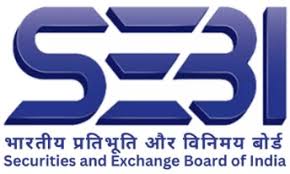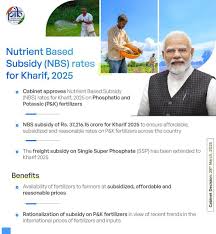Prelims
National Commission for Minorities (NCM)

About NCM
- Statutory body established under National Commission for Minorities Act, 1992 safeguarding minority interests.
- First statutory Commission constituted on 17th May 1993 for minority protection nationwide.
Genesis
- Minorities Commission established 1978 through Ministry of Home Affairs Resolution initially created.
- Moved to Ministry of Welfare in 1984 under administrative restructuring for better coordination.
- 1988: Ministry of Welfare excluded linguistic minorities from Commission’s jurisdiction limiting scope significantly.
Composition
- Consists of Chairperson, Vice-Chairperson, five members nominated by Central Government for administration.
- Each member must belong to one of six notified minority communities: Muslim, Christian, Sikh, Buddhist, Parsi, Jain.
- Absence of full body led to concerns over inefficiency affecting Commission’s functioning.
Powers and Tenure
- Has quasi-judicial powers for addressing minority grievances and complaints effectively under Act.
- Each member serves three-year term from date they assume office for continuity.
Removal Provisions
- Central Government may remove Chairperson/Member if adjudged insolvent or taking paid employment outside.
- Also for refusing/incapable of acting, declared unsound mind, abusing office, convicted involving moral turpitude.
Minorities in India
- Constitution doesn’t define ‘Minority’ but recognizes religious and linguistic minorities for protection.
- NCM Act 1992 defines minority as “community notified by Central government” for legal purposes.
- 1993 notification: five religious communities—Muslims, Christians, Sikhs, Buddhists, Zoroastrians (Parsis) initially recognized.
- Jains notified as minority community in 2014 expanding coverage of minority protection framework.
- Population Statistics
- Six communities constitute 18.80% of India’s population per 2001 Census data available.
- Parsi population estimated ~57,000 (2011 Census doesn’t mention specific Parsi population figures).
Constitutional Safeguards
- Article 29: Right to conserve distinct language, script, culture for any citizen section.
- Article 30: Minorities’ right to establish and administer educational institutions autonomously without interference.
- Article 347: Special provision for language spoken by population section in any State.
- Article 350-A: Facilities for instruction in mother-tongue at primary stage ensuring linguistic rights.
- Article 350-B: Special Officer for Linguistic Minorities with duties protecting linguistic minority interests.
PM-SHRI

Context: Kerala CM Pinarayi Vijayan formed seven-member review committee to study PM PM-SHRI Scheme.
PM-SHRI Scheme
- Centrally Sponsored Scheme (2022) establishing 14,500+ PM SHRI Schools by upgrading existing schools to showcase NEP 2020 implementation.
- Objective
- Create inclusive, nurturing environment promoting student well-being and safety, offering diverse learning experiences and quality infrastructure/resources.
- Funding Pattern
- 60:40 (Centre:State/UTs with legislature, except J&K).
- 90:10 (NE, Himalayan States, J&K UT).
- 100% Central (UTs without legislature).
- States must sign MoU with Education Ministry for participation.
- Duration
- 2022-23 to 2026-27; thereafter States/UTs maintain benchmarks.
- Key Features
- Pedagogy
- Focus on holistic development: Communication, collaboration, critical thinking.
- Experiential, inquiry-driven, learner-centered teaching.
- Competency-based assessments applying knowledge to real-life situations.
- Infrastructure
- Modern facilities: Smart Classrooms, Computer Labs, Integrated Science Labs, Vocational/Skill Labs, Atal Tinkering Labs, libraries, art rooms.
- Green initiatives: Water conservation, waste recycling.
- Eligibility
- Schools managed by Central/State/UT Governments, local bodies.
- All Kendriya Vidyalayas and Navodaya Vidyalayas (non-project, permanent buildings).
- Monitoring
- School Quality Assessment Framework (SQAF): Standards and best practices for excellence; regular evaluations ensure high standards.
- Pedagogy
- Selection Process (Challenge Mode – 3 Stages)
- Stage-1: Sign MoU with Centre.
- Stage-2: Identify eligible schools using UDISE+ data.
- Stage-3: Challenge method where eligible schools compete on criteria; States/UTs/KVS/JNV verify and recommend; Expert committee (headed by Secretary) makes final selection.
UNCTAD (United Nations Conference on Trade and Development)

About UNCTAD
- Headquartered in Geneva, Switzerland; permanent intergovernmental body established by UN General Assembly in 1964.
- Supports developing countries accessing globalized economy benefits more fairly and effectively through assistance.
- Provides economic and trade analysis, facilitates consensus-building, offers technical assistance for development.
- Helps developing countries use trade, investment, finance, technology for inclusive, sustainable development goals.
Organizational Structure
- Part of UN Secretariat reporting to UN General Assembly and Economic/Social Council.
- Has own membership, leadership, budget maintaining organizational autonomy within UN framework.
- Also part of UN Development Group coordinating development activities globally across agencies.
Key Historical Developments
- First UNCTAD conference held in Geneva (1964) establishing foundation for trade and development cooperation.
- 1989: Agreement on Global System of Trade Preferences (GSTP) among developing countries came into force.
- GSTP provides tariff/non-tariff preferences among members.
- Uruguay Round conclusion led to World Trade Organization establishment in 1995 strengthening international trade framework.
- Tenth conference in Bangkok (February 2000) adopted “The Spirit of Bangkok” political declaration strategy.
- Highlighted need for differentiated approach to developing countries’ problems in globalized world context.
Key Reports
- Trade and Development Report analyzing global trade and development trends annually published.
- World Investment Report tracking global investment patterns and foreign direct investment flows worldwide.
- The Least Developed Countries Report focusing on challenges and opportunities for LDCs specifically.
Securities and Exchange Board of India (SEBI)

About SEBI
- Principal regulator of securities market in India functioning as statutory body under Ministry of Finance.
- Headquarters in Mumbai; 4 regional offices in Ahmedabad, Kolkata, Chennai, Delhi for nationwide coverage.
Objectives
- Act as watchdog of Indian capital market ensuring regulatory compliance and market integrity.
- Protect investors’ interests in securities safeguarding their rights and investments systematically.
- Promote and regulate securities market for stability, growth, and investor confidence nationwide.
Evolution
- Before SEBI: Controller of Capital Issues was regulatory authority under Capital Issues (Control) Act, 1947.
- April 1988: SEBI constituted through Executive Resolution as non-statutory body without statutory power.
- SEBI Act, 1992: became autonomous and statutory body with legal powers for market regulation.
Organizational Structure
- Follows corporate structure with Board of Directors at top managing overall operations and direction.
- Board comprises 9 members: Chairperson (Government nominee), 2 from Finance Ministry, 1 from RBI.
- 5 members appointed by Government of India; at least 3 shall be Whole-Time Members.
Powers and Functions
- Quasi-Legislative and Quasi-Judicial
- Can draft regulations, conduct inquiries, pass rulings, impose penalties as quasi-judicial authority.
- Powers with respect to Issuers
- Call for information, undertake inspection, conduct inquiries/audits of stock exchanges, mutual funds, intermediaries.
- Prohibit insider trading in securities protecting market integrity and fair trading practices.
- Powers with respect to Investors
- Promote and regulate self-regulatory organizations ensuring industry standards and compliance mechanisms.
- Prohibit fraudulent, unfair trade practices; regulate substantial share acquisition and company takeovers.
- Promote investors’ education, training of intermediaries for informed decision-making and market participation.
- Powers with respect to Intermediaries
- Register and regulate stock brokers, sub-brokers, share transfer agents, bankers, trustees, merchant bankers.
- Register and regulate venture capital funds, collective investment schemes, mutual funds for investor protection.
Issues With SEBI Functioning
- Excessive focus on market conduct regulation; lesser emphasis on prudential regulation causing imbalance.
- Greater legislative and enforcement powers compared to US/UK counterparts raising concerns about overreach.
- Can impose restraints on suspicion causing serious economic injury; fear of regulator widespread.
- Prior consultation with market missing; rules and enforcement inadequate in areas like insider trading.
Initiatives Taken by SEBI
- IEPF
- Investor Education and Protection Fund established under Companies Act, 2013 Section 125 for awareness.
- SCORES Portal
- Web-based centralized grievance redress system enabling investors to lodge, follow up complaints, track status.
- Investor Education
- Initiatives include Securities Market Awareness Campaign, Financial Literacy-cum-Counselling Centre for investor empowerment.
Way Forward
- Attitudinal change needed shifting focus from market conduct to prudential regulation for holistic oversight.
- Continuous monitoring, improving market intelligence to strengthen regulations and enforcement mechanisms effectively.
- Deep review and research beyond volume of funds raised as success parameter needed.
- Lateral entry to strengthen human resources drawing best talent for enhanced regulatory capacity.
- Unified financial regulator makes sense removing overlap and excluded boundaries in segmented Indian markets.

About AmazonFACE
- AmazonFACE (Free-Air CO₂ Enrichment) large-scale climate simulation project assessing tropical rainforest response.
- Designed to study how Amazon rainforest reacts to elevated CO₂ levels expected by 2050-2060.
- First experiment of its kind in tropical forests advancing climate change research significantly.
Experimental Setup
- Six steel tower rings installed around groups of 50-70 mature trees near Manaus, Brazil.
- Three rings fumigated with CO₂ concentrations matching future climate forecasts; remaining serve as controls.
- Continuous sensors record data on photosynthesis, oxygen release, water vapor exchange every 10 minutes.
- Goal: recreate “atmosphere of the future” observing ecosystem-level responses to climate change.
Key Features
- Location: near Manaus, Brazil; supported by INPA (National Institute for Amazon Research), Universidade Estadual de Campinas.
- UK government collaboration providing international scientific cooperation and expertise for research project.
- Scientific innovation: first large-scale FACE experiment in natural tropical forest extending temperate region trials.
- Real-time monitoring: tracks rain, storms, CO₂ absorption, respiration continuously for comprehensive data.
- Climate modeling application: predicts changes in forest carbon storage, biodiversity, resilience under future conditions.
Significance
- Climate adaptation insight: predicts Amazon rainforest response to rising CO₂ levels guiding global strategies.
- Scientific breakthrough: world’s first large-scale CO₂ enrichment experiment in tropical rainforest ecosystem.
- Policy relevance: provides critical data for COP30 negotiations strengthening Brazil’s climate science leadership.
- Crucial for rainforest conservation and carbon budgeting policy deliberations at international climate forums.
Nutrient Based Subsidy (NBS) Scheme

About NBS Scheme
- Nutrient Based Subsidy is centrally sponsored scheme under Department of Fertilizers providing fixed subsidy.
- Provides fixed subsidy per kg of nutrient content (N, P, K, S) in Phosphatic and Potassic (P&K) fertilizers.
- Introduced on 1st April 2010 replacing earlier product-based subsidy system for non-urea fertilizers.
- Administered by Department of Fertilizers, Ministry of Chemicals and Fertilizers, Government of India.
Objectives
- Make fertilizers available at reasonable prices to farmers ensuring affordability and accessibility nationwide.
- Promote balanced fertilizer use based on soil and crop requirements for sustainable agriculture.
- Encourage fertilizer industry to adopt efficiency, cost-effectiveness, and competition improving productivity.
Key Features
- Subsidy based on nutrient content: Fixed subsidy (₹/kg) for N, P, K, S nutrients.
- Freedom in MRP fixation: Companies set Maximum Retail Prices (MRPs) reasonably; government monitors prices.
- Coverage: applies to 28 grades of P&K fertilizers including Di-Ammonium Phosphate (DAP), NPKS grades.
- Special support: Government announces special packages (e.g., for DAP) beyond NBS rates stabilizing prices.
- Urea exception: remains under statutory price control; fixed MRP ₹242 per 45-kg bag since March 2018.
Significance
- Affordable fertilizers: ensures continuous supply of essential P&K fertilizers at subsidized prices to farmers.
- Nutrient balance: promotes judicious, soil-specific fertilizer use avoiding over-reliance on nitrogenous fertilizers.
- Fiscal efficiency: provides transparent, predictable subsidy disbursement to fertilizer companies enhancing accountability.
Hurricane Melissa
About Hurricane Melissa
- Hurricane Melissa is powerful tropical cyclone becoming strongest hurricane ever recorded in Jamaica’s history.
- Category 5 hurricane surpassing previous major storms like Hurricane Gilbert (1988) in intensity.
- Originated as tropical depression over eastern Caribbean; strengthened due to warm ocean waters.
- Favorable atmospheric conditions evolved into Category 5 hurricane on Saffir-Simpson scale classification.
Formation Process
- Trigger: low-pressure disturbance developed over central Caribbean Sea initiating cyclone formation.
- Intensification: warm sea surface temperatures, high humidity fueled rapid intensification into major hurricane.
- Trajectory: moved westward across Jamaica; curved northeast toward Cuba and Bahamas subsequently.
- Impact: winds up to 185 mph (295 km/h), extensive flooding, agricultural loss, infrastructure damage.
- Over 1.5 million people displaced in Jamaica causing humanitarian crisis requiring emergency response.
Saffir-Simpson Hurricane Wind Scale
- 1-5 rating system classifying hurricanes based on maximum sustained wind speeds for impact assessment.
- Estimates potential property damage, impact severity; doesn’t account for rainfall or storm surge.
- Category 1 (74-95 mph): minor roof/tree damage; localized power outages few days.
- Category 2 (96-110 mph): major roof/siding damage; widespread power failures several days/weeks.
- Category 3 (111-129 mph) – Major Hurricane: devastating structural damage; electricity/water unavailable days/weeks.
- Category 4 (130-156 mph) – Major Hurricane: catastrophic damage; severe structural failures; areas uninhabitable weeks.
- Category 5 (≥157 mph) – Major Hurricane: near-total destruction; long-term power/water outages; mass displacement.

